As revealed by the Irish Farmers Journal over the past few weeks, there has been a total of 74 applications for rotary parlours through the Targeted Agricultural Modernisation Scheme (TAMS) since it was first opened to farmers in 2015. One such parlour has just been completed on the farm of Mick Magan and his father Mike from Kilashee in Co Longford.
The farm has recently installed a new 40-unit GEA Milfos rotary for the 220 cow herd on the farm.
“I was out in Canterbury in New Zealand in 2007 and I said when I came back that if I was ever upgrading the parlour that I would go with a rotary.
"Once you milk in a rotary it is very difficult to go back to anything else,” Mick explained.
“When you’re milking in a rotary all you can think of is growth of the herd, the old parlour had become the quota, but we hope to be able to push on numbers.
“There is a massive level of efficiency to it compared to a herringbone parlour. We had an old 10-unit double up parlour but to milk 200 cows could take four hours in the morning, that said we probably pushed on numbers in the last year in preparation for this. Now we could get through 200 in an hour.”
The existing parlour was located in the middle of the yard and while the option of building on the same site was explored, the final decision was made to construct the new parlour on a greenfield site with Grasstec Group completing the design and planning application for the project.
“Going for a greenfield site was our best option, it meant that we could keep the parlour separate from the rest of the yard,” Mick explained.
“It does mean that cows have to walk a little further if they are being milked off the cubicles but we are a grass based farm so it is milking off grass that is more important.
“Cows would get out on 1 February and would stay out until the end of November, so grazing is the priority. Cows would also be buffer fed at the shoulders of the year.”
Production on the farm is approximately 500kg of milk solids with cows fed approximately 1.2t/year. The target is 2,500kg of milk solids/ha.
“Cow type would probably be more Holstein than Friesian but the focus is on production from grass.”
Picture one to three and figure one
The shed containing the rotary measures 16.4m by 23.2m. To the rear of the shed is an impressive holding area, fitted with a collecting yard, an automatic drafter, footbaths, an eight-cow crush and several holding pens. A slatted tank spans the bottom of the yard to collect run-off and dirty water.

Picture one.
Within the building is the dairy, plant room, chemical store and office. There is also a loft above the plant room and dairy which overlooks the rotary.
While several different brands of parlour were considered, the final decision to go with a GEA parlour was made for a number of reasons according to Mick: “We went through Charleville Refrigaration for the parlour, the bulk tank and the drafting system. Being able to get the three from the one supplier was a bonus. I was impressed with the GEA parlour, they are a strong, durable and solid parlour.”

Picture two.
Cows enter the parlour in single file from the collecting yard, with clusters then attached by the farmer. The cow will be milked as she completes the 9-10 minute rotation while on the platform. Once she is fully milked the automatic cluster removers will kick-in. She will then be able to back out of the rotary once the rotation is complete. Once she backs out she will complete a 180° turn. This area has been covered in rubber mats to help reduce lameness issues. Cows can then move back through the handling area and back to paddocks.
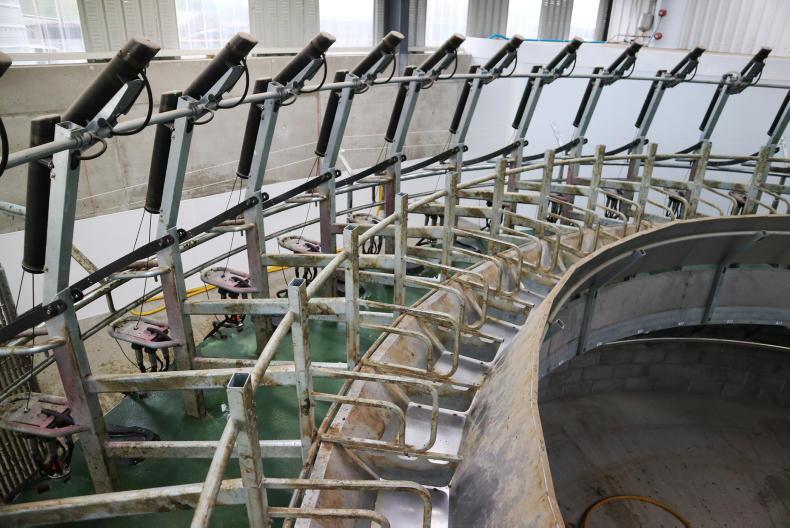
Picture three.
If the cow has completed her rotation but is not yet fully milked, the auto-retention feature of the parlour ensures she stays on the platform for another rotation.
There should be no more than 5-10% of the herd undergoing a second rotation as this reduces the efficiency of the system. If retention rate is above this then the speed of the rotation needs to be decreased.
The parlour is also fitted with an automatic teat-spray. While not yet fitted, the parlour is compatible and future proofed to add milk meters and a feed-to-yield system if desired in the future.
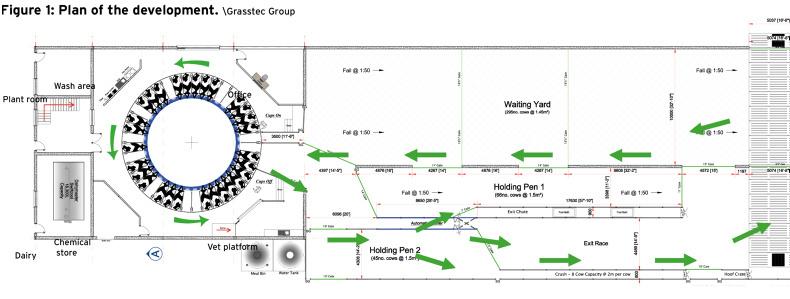
Picture four
A nice simple addition to the parlour is a foldable vet platform that can be lowered down when access is needed to cows.

Picture four.
“We wanted something that wouldn’t be in the way, it will only be used for a very small portion of the year. This year we carried out all pre-breeding scanning, tail painting and all AI from the platform, it worked really well,” said Mick.
Pictures five and six
Cows can enter the collecting yard straight from the back, which greatly aids positioning when it comes to entering the parlour. The slope of the yard is 1:40 back towards a large slatted tank which runs across the back of the yard. The collecting yard itself has capacity for approximately 280 cows if required.
However, there is ample room to extend the yard back to cope with any possible expansion.

Picture five.
The holding area is 43m long and 10m wide giving a total area of 430m2. At current numbers this gives 1.95m2/cow. If numbers increased to 280 cows, it would mean space of 1.53m2/cow.
The entire yard can be cleaned with a flush-wash system. The dirty water used to wash down the rotary is collected as is the water used to cool the milk. This can be stored in a 19,000 litre tank which is then released to flood the holding area and carry any dirt into the slatted tanks. It would take water from four milkings to fill the tank but the full tank is not needed to clean the yard. The full cost of the storage tank as well as the flushwash system was approximately €10,000 excluding VAT.
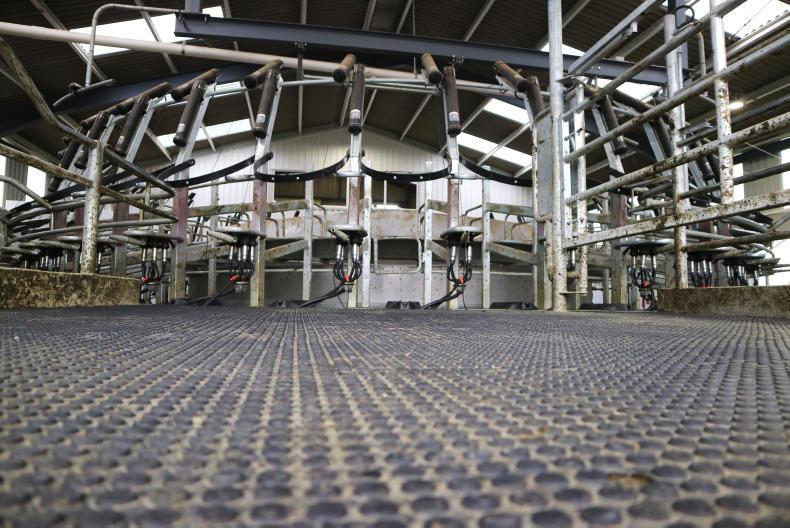
Picture six.
A reduction in lameness has been noted since the move to the new parlour. This has been attributed to cows standing in collecting yards for four hours less per day (two hours less per milking) than they were in the old parlour.
Pictures seven and eight
The interior walls of the shed around the parlour are fitted with plastic Aneuco panels. While panels have been attached to some of the mass concrete walls, there are 175mm thick panels that have an interior mould that can be filled with concrete to act as a load-bearing wall. Re-bar can be fitted into the mould of the panels to provide additional strength.
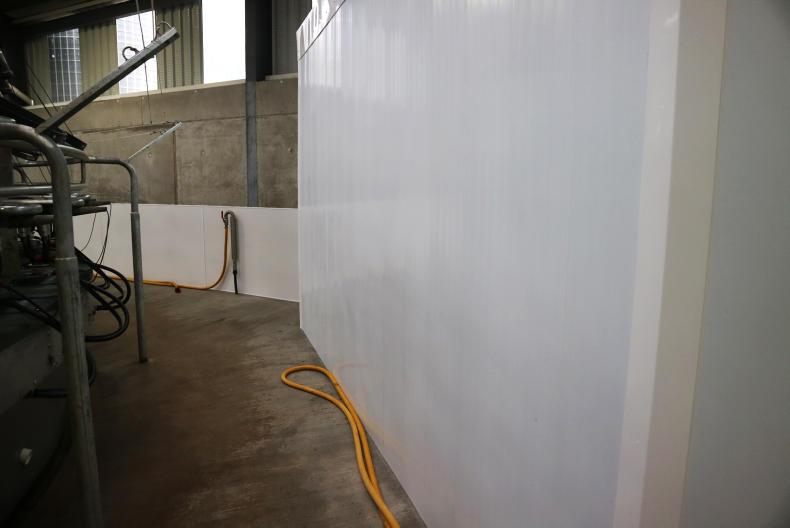
Picture seven.
Recently fitted to the holding area is a three-way drafter, also supplied by GEA. Cows can be guided to several holding areas, down through the passageway containing two footbaths, or back out to pasture. The footbaths are drained to a slurry channel meaning they can be quickly and easily emptied by removing a bung.
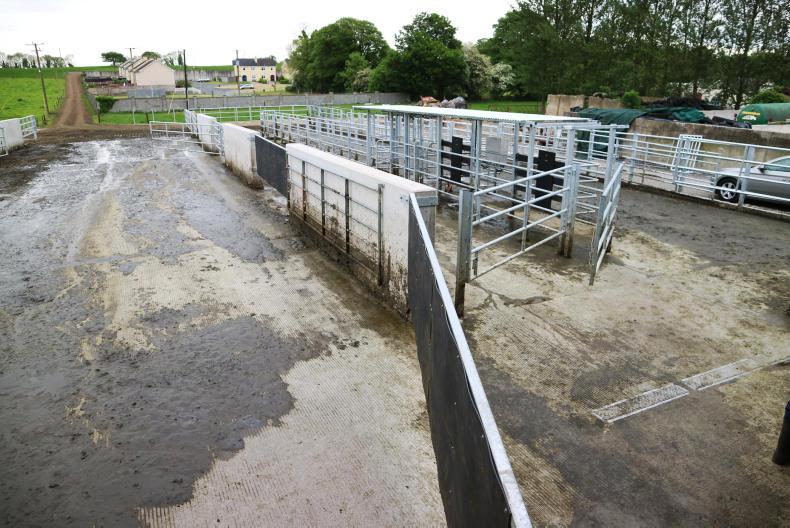
Picture eight.
The father and son duo were under no illusion about the scale of the investment that they have made.
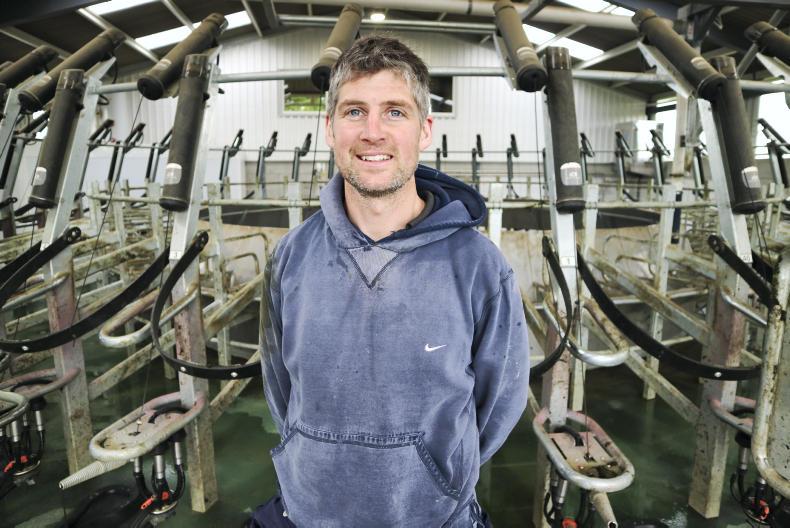
“Going with a rotary instead of a conventional parlour probably means you are adding an extra €100,000 to the overall cost of the project,” Mick said. A 40-unit rotary has a reference cost of approximately €190,000 excluding VAT. However, this is only one portion of a very large investment.
Mike and Mick are in a registered farm partnership and applied through TAMS for grant aid for the project. Mick is eligible to receive 60% grant aid on the first €80,000, qualifying as a young trained farmer, while Mike is eligible for 40% grant of the next €80,000 invested. This means that they are eligible for €80,000 in grant aid.
The net cost of the development, after grant aid and the VAT element of the investment are claimed back, will be approximately €420,000.
“I do think we are going to see the number of rotaries on medium-sized herds increasing,” said Mick.
“Sourcing good labour is getting more difficult but It’s not just about the time it takes to milk the cows. There is much more comfort milking in a rotary parlour and it is where I will be milking for the next 40 years.” McKnight Dairy Services from Co Donegal fitted the parlour.
The rubber matting was supplied by Easyfix, while the panels were supplied by Frank Murphy of Anenco.
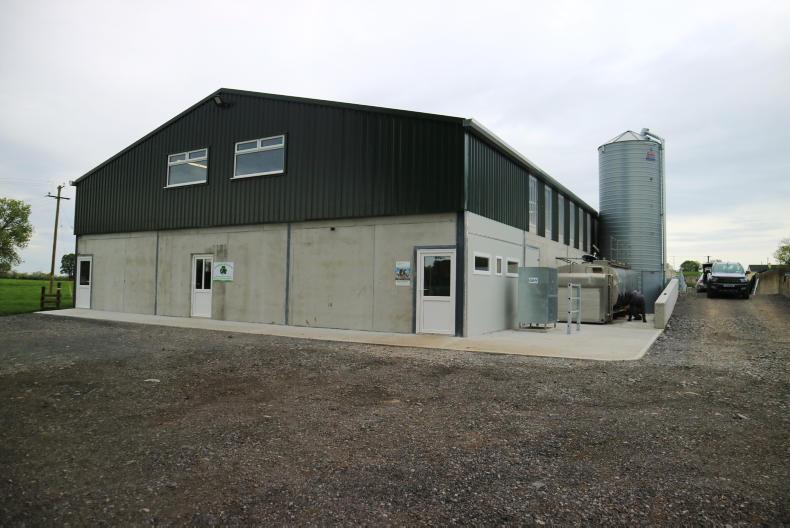
Regans Structural Steel supplied and erected the shed. Fibre cement sheeting is in place throughout the roof of the shed, supplied by Cembrit.
The flush-wash system was supplied by Jetwash. Groundworks and building work was completed by Thomas Killian.
Danny Cox was the engineer and builder for the project. Kevin Hanley was the plumber, and Richard Smith completed the electrical work. Hanley Quarries supplied the concrete.
As revealed by the Irish Farmers Journal over the past few weeks, there has been a total of 74 applications for rotary parlours through the Targeted Agricultural Modernisation Scheme (TAMS) since it was first opened to farmers in 2015. One such parlour has just been completed on the farm of Mick Magan and his father Mike from Kilashee in Co Longford.
The farm has recently installed a new 40-unit GEA Milfos rotary for the 220 cow herd on the farm.
“I was out in Canterbury in New Zealand in 2007 and I said when I came back that if I was ever upgrading the parlour that I would go with a rotary.
"Once you milk in a rotary it is very difficult to go back to anything else,” Mick explained.
“When you’re milking in a rotary all you can think of is growth of the herd, the old parlour had become the quota, but we hope to be able to push on numbers.
“There is a massive level of efficiency to it compared to a herringbone parlour. We had an old 10-unit double up parlour but to milk 200 cows could take four hours in the morning, that said we probably pushed on numbers in the last year in preparation for this. Now we could get through 200 in an hour.”
The existing parlour was located in the middle of the yard and while the option of building on the same site was explored, the final decision was made to construct the new parlour on a greenfield site with Grasstec Group completing the design and planning application for the project.
“Going for a greenfield site was our best option, it meant that we could keep the parlour separate from the rest of the yard,” Mick explained.
“It does mean that cows have to walk a little further if they are being milked off the cubicles but we are a grass based farm so it is milking off grass that is more important.
“Cows would get out on 1 February and would stay out until the end of November, so grazing is the priority. Cows would also be buffer fed at the shoulders of the year.”
Production on the farm is approximately 500kg of milk solids with cows fed approximately 1.2t/year. The target is 2,500kg of milk solids/ha.
“Cow type would probably be more Holstein than Friesian but the focus is on production from grass.”
Picture one to three and figure one
The shed containing the rotary measures 16.4m by 23.2m. To the rear of the shed is an impressive holding area, fitted with a collecting yard, an automatic drafter, footbaths, an eight-cow crush and several holding pens. A slatted tank spans the bottom of the yard to collect run-off and dirty water.

Picture one.
Within the building is the dairy, plant room, chemical store and office. There is also a loft above the plant room and dairy which overlooks the rotary.
While several different brands of parlour were considered, the final decision to go with a GEA parlour was made for a number of reasons according to Mick: “We went through Charleville Refrigaration for the parlour, the bulk tank and the drafting system. Being able to get the three from the one supplier was a bonus. I was impressed with the GEA parlour, they are a strong, durable and solid parlour.”

Picture two.
Cows enter the parlour in single file from the collecting yard, with clusters then attached by the farmer. The cow will be milked as she completes the 9-10 minute rotation while on the platform. Once she is fully milked the automatic cluster removers will kick-in. She will then be able to back out of the rotary once the rotation is complete. Once she backs out she will complete a 180° turn. This area has been covered in rubber mats to help reduce lameness issues. Cows can then move back through the handling area and back to paddocks.

Picture three.
If the cow has completed her rotation but is not yet fully milked, the auto-retention feature of the parlour ensures she stays on the platform for another rotation.
There should be no more than 5-10% of the herd undergoing a second rotation as this reduces the efficiency of the system. If retention rate is above this then the speed of the rotation needs to be decreased.
The parlour is also fitted with an automatic teat-spray. While not yet fitted, the parlour is compatible and future proofed to add milk meters and a feed-to-yield system if desired in the future.

Picture four
A nice simple addition to the parlour is a foldable vet platform that can be lowered down when access is needed to cows.

Picture four.
“We wanted something that wouldn’t be in the way, it will only be used for a very small portion of the year. This year we carried out all pre-breeding scanning, tail painting and all AI from the platform, it worked really well,” said Mick.
Pictures five and six
Cows can enter the collecting yard straight from the back, which greatly aids positioning when it comes to entering the parlour. The slope of the yard is 1:40 back towards a large slatted tank which runs across the back of the yard. The collecting yard itself has capacity for approximately 280 cows if required.
However, there is ample room to extend the yard back to cope with any possible expansion.

Picture five.
The holding area is 43m long and 10m wide giving a total area of 430m2. At current numbers this gives 1.95m2/cow. If numbers increased to 280 cows, it would mean space of 1.53m2/cow.
The entire yard can be cleaned with a flush-wash system. The dirty water used to wash down the rotary is collected as is the water used to cool the milk. This can be stored in a 19,000 litre tank which is then released to flood the holding area and carry any dirt into the slatted tanks. It would take water from four milkings to fill the tank but the full tank is not needed to clean the yard. The full cost of the storage tank as well as the flushwash system was approximately €10,000 excluding VAT.

Picture six.
A reduction in lameness has been noted since the move to the new parlour. This has been attributed to cows standing in collecting yards for four hours less per day (two hours less per milking) than they were in the old parlour.
Pictures seven and eight
The interior walls of the shed around the parlour are fitted with plastic Aneuco panels. While panels have been attached to some of the mass concrete walls, there are 175mm thick panels that have an interior mould that can be filled with concrete to act as a load-bearing wall. Re-bar can be fitted into the mould of the panels to provide additional strength.

Picture seven.
Recently fitted to the holding area is a three-way drafter, also supplied by GEA. Cows can be guided to several holding areas, down through the passageway containing two footbaths, or back out to pasture. The footbaths are drained to a slurry channel meaning they can be quickly and easily emptied by removing a bung.

Picture eight.
The father and son duo were under no illusion about the scale of the investment that they have made.

“Going with a rotary instead of a conventional parlour probably means you are adding an extra €100,000 to the overall cost of the project,” Mick said. A 40-unit rotary has a reference cost of approximately €190,000 excluding VAT. However, this is only one portion of a very large investment.
Mike and Mick are in a registered farm partnership and applied through TAMS for grant aid for the project. Mick is eligible to receive 60% grant aid on the first €80,000, qualifying as a young trained farmer, while Mike is eligible for 40% grant of the next €80,000 invested. This means that they are eligible for €80,000 in grant aid.
The net cost of the development, after grant aid and the VAT element of the investment are claimed back, will be approximately €420,000.
“I do think we are going to see the number of rotaries on medium-sized herds increasing,” said Mick.
“Sourcing good labour is getting more difficult but It’s not just about the time it takes to milk the cows. There is much more comfort milking in a rotary parlour and it is where I will be milking for the next 40 years.” McKnight Dairy Services from Co Donegal fitted the parlour.
The rubber matting was supplied by Easyfix, while the panels were supplied by Frank Murphy of Anenco.

Regans Structural Steel supplied and erected the shed. Fibre cement sheeting is in place throughout the roof of the shed, supplied by Cembrit.
The flush-wash system was supplied by Jetwash. Groundworks and building work was completed by Thomas Killian.
Danny Cox was the engineer and builder for the project. Kevin Hanley was the plumber, and Richard Smith completed the electrical work. Hanley Quarries supplied the concrete.

















 This is a subscriber-only article
This is a subscriber-only article





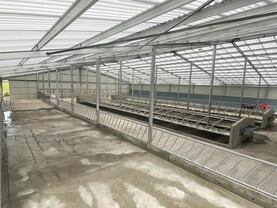


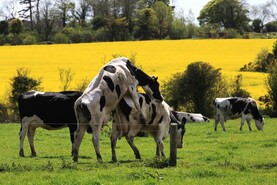

SHARING OPTIONS: